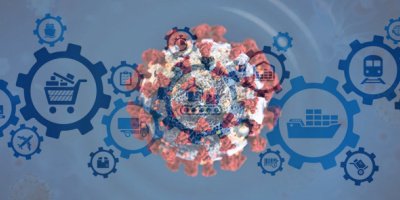Vista, Office, and Internet Explorer Apprehensions
This news isn't the kind Microsoft was yearning to hear when releasing new versions of its desktop operating system (Vista), a new office platform (Office 2007), and Internet Explorer 7. Yet a few sizable organizations announced recently that they will be holding off upgrades for a considerable amount of time, if not seeking alternative options for software solutions altogether.
The U.S. Department of Transportation (DOT) recently released a memo forcing a "moratorium until further notice on desktop/laptop computer software upgrades to Microsoft Vista, Office 2007, and Internet Explorer 7." The memo was released to the public in late January and was issued due to an internal analysis performed with assistance from the Gartner Group. Daniel G. Mintz, the DOT's Chief Information Officer, states many concerns about upgrading the listed software. The first concern on the memo is the costs: The actual hardware and software upgrades, application upgrades, and the labor for performing the upgrades are specifically addressed in the memo.
Mintz also mentions possible compatibility issues with current documents and the new Office 2007 software, specifically Word. Other reasons involved the fiscal year of 2007 limitations and the fact that a move to a new building in the near future would be in direct conflict of much-needed IT support.
Mintz said, "There appears to be no compelling technical or business case for upgrading to these new Microsoft products." Subsequently, the ban is in effect indefinitely, and a following memo that details future technology plans will be released within 180 days.
Similarly, the Federal Aviation Administration (FAA) released a plan for its organization, except that it's taking things one step further. David Bowen, FAA Chief Information Officer, is considering replacing the current Windows XP environment when the time approaches to reconsider the operating system. On the top of the list of replacement alternatives are Dell PCs running Linux accessing Google Apps.
In an interview with InformationWeek, Bowen made it clear that the FAA has not completely discounted Microsoft products for its future. The agency is scheduled to meet with Microsoft to address Bowen's compatibility and financial concerns. The FAA has approximately 45,000 employees who would be affected by any technology decisions it chooses to follow.
To put things into perspective with costs of upgrading software alone, consider that 45,000 PCs and laptops multiplied by an estimated $200 for the Vista Business upgrade edition totals about $9 million U.S. dollars. Again, this doesn't include any hardware costs that might be involved with the process. Obviously, this is an imaginary figure, but nonetheless, with folks like the DOT and FAA questioning continued use of Microsoft products, I wonder if Redmond is starting to get a little nervous.
IBM WebSphere Extending Google Gadgets
IBM has announced a partnership with Google to help spread Google Gadgets via IBM's WebSphere technology, the ongoing software project devoted to establishing e-business applications across Web technology. Google Gadgets are basically small applications that can be written in simple HTML and JavaScript form and then placed onto a Web-based site or application to perform a function or to display various items. These apps range from calendars, clocks, email client inboxes, and weather clients to games, maps, YouTube videos, and Webcams. If you can think of it, no matter how useful or not, chances are you can find it on Google Gadgets.
IBM WebSphere will provide a corporate portal to allow users to create new Internet applications and offer over 4,000 current Google Gadgets to IBM WebSphere Portal and Portal Express customers. In a press release from IBM, Marissa Mayer, Google VP, displayed a very positive response to the news.
"We're excited to help IBM's WebSphere Portal enterprise business users provide a truly customized experience for both their internal and external audiences," Mayer said.
By IBM extending Google Gadgets through WebSphere, IBM's customers can now benefit from feature-rich Internet content not previously available. IBM Lotus VP Larry Bowden said, "IBM and Google together can deliver a content-rich user experience to small businesses and large enterprises." He went on to state that Google Gadgets are accessed and managed seamlessly from within the WebSphere Portal.
Other key features of the deal are increased access to new Web-based communities, expanding numbers of Web application development, and more easily created search links. The plan is to increase the value of content by extending the ability to create more easily used and deployed search methods across Internet-based technologies by embedding more search features.
Lastly, offering complete customizable solutions to businesses will address all flexibility concerns that customers might have. The official Web site extending these services will be available sometime this month.
With IBM continuing to deliver more new options to its customer base and Google's ability to market even the smallest of things, such as Google Gadgets, I wonder what's next. IBM System G?
IBM Search Sitemap Utility
In the same press release, IBM announced a bit of news about its latest search sitemap utilities. Currently, many difficulties arise with indexing and searching content on Web sites and portals due to frequently changing data. Sitemaps can simplify indexing content with external search engines, thereby making Web site content more easily attainable.
With new protocols from sitemaps.org based on XML standards, IBM can better provide information to search engines. By embedding XML tags within content, information in the form of URL priority, the last modification date of the page or file, and even the frequency of content changes will be easily indexed and searchable.
Once sitemaps are in place on the actual content, search engines must be made aware of them in order to take advantage of handing out URL information to Web site crawlers. The ultimate goal is to allow Web site engines to more readily crawl content and then provide customers more accessibility to the public portals. The Sitemap 0.90 protocol will be available on the WebSphere portal as a package to download later in 2007.
Max Hetrick is a PC Support Analyst/Specialist who holds a certification as an MCSA. He also has experience with installation and maintenance of Linux operating systems from the PC to server levels. Max can be reached at






















 More than ever, there is a demand for IT to deliver innovation. Your IBM i has been an essential part of your business operations for years. However, your organization may struggle to maintain the current system and implement new projects. The thousands of customers we've worked with and surveyed state that expectations regarding the digital footprint and vision of the company are not aligned with the current IT environment.
More than ever, there is a demand for IT to deliver innovation. Your IBM i has been an essential part of your business operations for years. However, your organization may struggle to maintain the current system and implement new projects. The thousands of customers we've worked with and surveyed state that expectations regarding the digital footprint and vision of the company are not aligned with the current IT environment. TRY the one package that solves all your document design and printing challenges on all your platforms. Produce bar code labels, electronic forms, ad hoc reports, and RFID tags – without programming! MarkMagic is the only document design and print solution that combines report writing, WYSIWYG label and forms design, and conditional printing in one integrated product. Make sure your data survives when catastrophe hits. Request your trial now! Request Now.
TRY the one package that solves all your document design and printing challenges on all your platforms. Produce bar code labels, electronic forms, ad hoc reports, and RFID tags – without programming! MarkMagic is the only document design and print solution that combines report writing, WYSIWYG label and forms design, and conditional printing in one integrated product. Make sure your data survives when catastrophe hits. Request your trial now! Request Now. Forms of ransomware has been around for over 30 years, and with more and more organizations suffering attacks each year, it continues to endure. What has made ransomware such a durable threat and what is the best way to combat it? In order to prevent ransomware, organizations must first understand how it works.
Forms of ransomware has been around for over 30 years, and with more and more organizations suffering attacks each year, it continues to endure. What has made ransomware such a durable threat and what is the best way to combat it? In order to prevent ransomware, organizations must first understand how it works. Disaster protection is vital to every business. Yet, it often consists of patched together procedures that are prone to error. From automatic backups to data encryption to media management, Robot automates the routine (yet often complex) tasks of iSeries backup and recovery, saving you time and money and making the process safer and more reliable. Automate your backups with the Robot Backup and Recovery Solution. Key features include:
Disaster protection is vital to every business. Yet, it often consists of patched together procedures that are prone to error. From automatic backups to data encryption to media management, Robot automates the routine (yet often complex) tasks of iSeries backup and recovery, saving you time and money and making the process safer and more reliable. Automate your backups with the Robot Backup and Recovery Solution. Key features include: Business users want new applications now. Market and regulatory pressures require faster application updates and delivery into production. Your IBM i developers may be approaching retirement, and you see no sure way to fill their positions with experienced developers. In addition, you may be caught between maintaining your existing applications and the uncertainty of moving to something new.
Business users want new applications now. Market and regulatory pressures require faster application updates and delivery into production. Your IBM i developers may be approaching retirement, and you see no sure way to fill their positions with experienced developers. In addition, you may be caught between maintaining your existing applications and the uncertainty of moving to something new. IT managers hoping to find new IBM i talent are discovering that the pool of experienced RPG programmers and operators or administrators with intimate knowledge of the operating system and the applications that run on it is small. This begs the question: How will you manage the platform that supports such a big part of your business? This guide offers strategies and software suggestions to help you plan IT staffing and resources and smooth the transition after your AS/400 talent retires. Read on to learn:
IT managers hoping to find new IBM i talent are discovering that the pool of experienced RPG programmers and operators or administrators with intimate knowledge of the operating system and the applications that run on it is small. This begs the question: How will you manage the platform that supports such a big part of your business? This guide offers strategies and software suggestions to help you plan IT staffing and resources and smooth the transition after your AS/400 talent retires. Read on to learn:
LATEST COMMENTS
MC Press Online